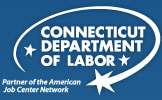| Go Back to List |
|
Apply blocks, strips, or sheets of shock-absorbing, sound-deadening, or decorative coverings to floors. |
|
|
|
| Technology used in this occupation: |
| |
Data base user interface and query software |
 |
| |
Sweep, scrape, sand, or chip dirt and irregularities to clean base surfaces, correcting imperfections that may show through the covering. |
| |
Cut flooring material to fit around obstructions. |
| |
Inspect surface to be covered to ensure that it is firm and dry. |
| |
Trim excess covering materials, tack edges, and join sections of covering material to form tight joint. |
| |
Form a smooth foundation by stapling plywood or Masonite over the floor or by brushing waterproof compound onto surface and filling cracks with plaster, putty, or grout to seal pores. |
| |
Measure and mark guidelines on surfaces or foundations, using chalk lines and dividers. |
| |
Cut covering and foundation materials, according to blueprints and sketches. |
| |
Roll and press sheet wall and floor covering into cement base to smooth and finish surface, using hand roller. |
| |
Apply adhesive cement to floor or wall material to join and adhere foundation material. |
| |
Determine traffic areas and decide location of seams. |
| |
Active Listening - Giving full attention to what other people are saying, taking time to understand the points being made, asking questions as appropriate, and not interrupting at inappropriate times. |
| |
Speaking - Talking to others to convey information effectively. |
| |
Monitoring - Monitoring/Assessing performance of yourself, other individuals, or organizations to make improvements or take corrective action. |
| |
Social Perceptiveness - Being aware of others' reactions and understanding why they react as they do. |
| |
Coordination - Adjusting actions in relation to others' actions. |
| |
Critical Thinking - Using logic and reasoning to identify the strengths and weaknesses of alternative solutions, conclusions or approaches to problems. |
| |
Judgment and Decision Making - Considering the relative costs and benefits of potential actions to choose the most appropriate one. |
| |
Time Management - Managing one's own time and the time of others. |
| |
Active Learning - Understanding the implications of new information for both current and future problem-solving and decision-making. |
| |
Complex Problem Solving - Identifying complex problems and reviewing related information to develop and evaluate options and implement solutions. |
| |
Building and Construction - Knowledge of materials, methods, and the tools involved in the construction or repair of houses, buildings, or other structures such as highways and roads. |
| |
Customer and Personal Service - Knowledge of principles and processes for providing customer and personal services. This includes customer needs assessment, meeting quality standards for services, and evaluation of customer satisfaction. |
| |
Mathematics - Knowledge of arithmetic, algebra, geometry, calculus, statistics, and their applications. |
| |
Mechanical - Knowledge of machines and tools, including their designs, uses, repair, and maintenance. |
| |
Production and Processing - Knowledge of raw materials, production processes, quality control, costs, and other techniques for maximizing the effective manufacture and distribution of goods. |
| |
Design - Knowledge of design techniques, tools, and principles involved in production of precision technical plans, blueprints, drawings, and models. |
| |
English Language - Knowledge of the structure and content of the English language including the meaning and spelling of words, rules of composition, and grammar. |
| |
Education and Training - Knowledge of principles and methods for curriculum and training design, teaching and instruction for individuals and groups, and the measurement of training effects. |
| |
Public Safety and Security - Knowledge of relevant equipment, policies, procedures, and strategies to promote effective local, state, or national security operations for the protection of people, data, property, and institutions. |
| |
Transportation - Knowledge of principles and methods for moving people or goods by air, rail, sea, or road, including the relative costs and benefits. |
 |
| |
(Please note that some searches may not produce any results.) |
|
|
|
|
| |
|
These occupations usually require a high school diploma.
|
| |
|
Some previous work-related skill, knowledge, or experience is usually needed. For example, a teller would benefit from experience working directly with the public.
|
|
|
|
 |
|
| Statewide |
$50,594.00 |
$24.33 |
$19.73 |
$23.03 - $24.26 |
|
 |
|
|
 |
 |
| |
Employment in this occupation is expected to grow more slowly than average, and the number of annual openings will offer limited job opportunities. |
|
|
 |
|
|



